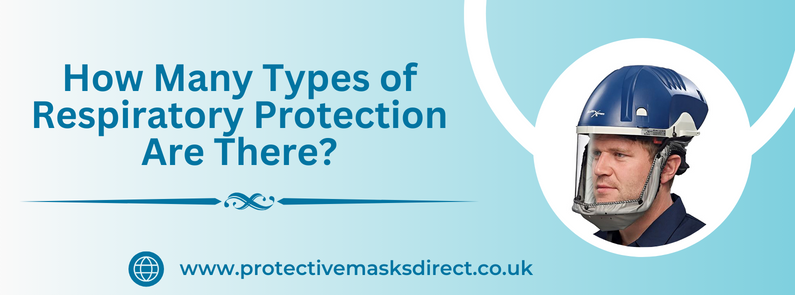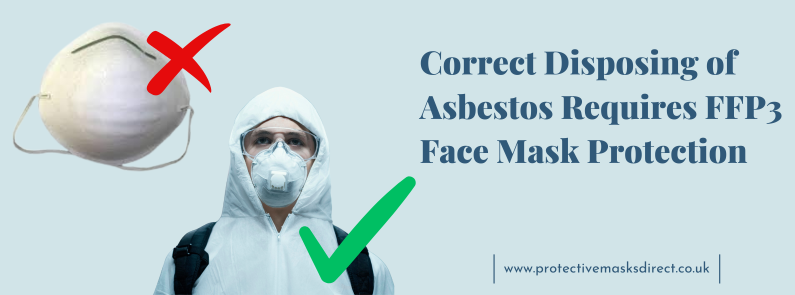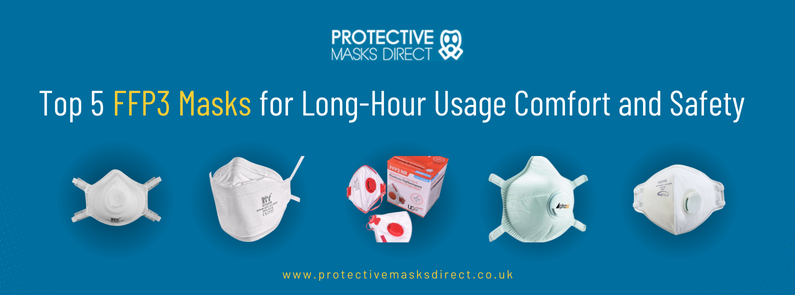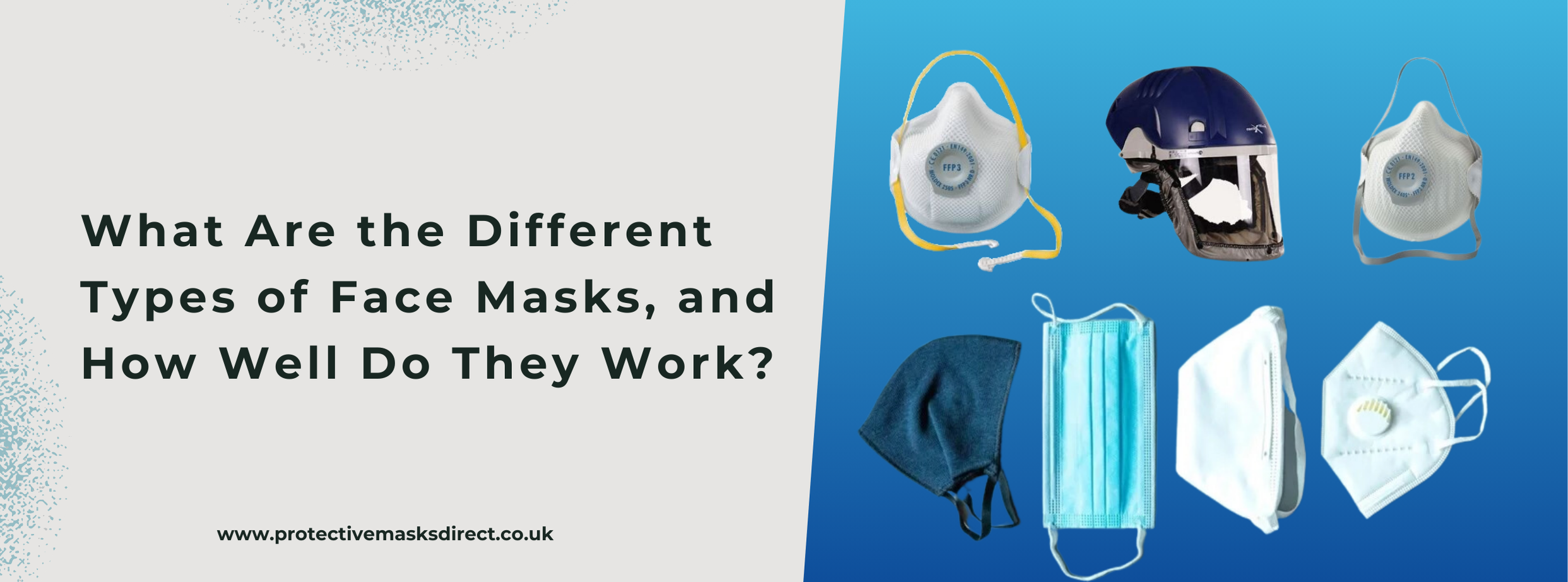
In hazardous workplaces, safeguarding your respiratory system is non-negotiable. Airborne contaminants pose severe risks to your health and well-being. Prolonged exposure can even lead to various respiratory illnesses and long-term complications, which is why respirators featuring clear safety symbols are so important.
Fortunately, specialised respiratory protection devices, such as reusable FFP3 masks, powered respirators, etc., exist to shield your lungs. These devices ensure you breathe clean, safe air while working. However, not all respirators are created equal. Different work environments demand different levels of protection.
This blog will walk you through the various respirator types, their use cases, and key differences.
Understanding Respiratory Hazards
Protecting your lungs begins with recognising the potential respiratory hazards. Such as,
- Particulates (dust, mists, fumes), gases, and vapours.
- Construction sites, manufacturing facilities, and chemical plants are also high-risk environments.
- However, hazards can lurk in unexpected places - even offices. Mold, cleaning products, and poor ventilation also pose insidious risks.
Importance of Assigned Protection Factor
Assigned Protection Factors (APFs) guide respirator selection based on the required level of protection. OSHA's Respiratory Protection standard outlines APFs for different respirator types.
- A higher APF means better protection against specific hazards.
- For example, disposable N95 masks and elastomeric half masks have an APF of 10.
- However, a full-facepiece powered air-purifying respirator (PAPR) has an APF of 1000, offering far superior protection.
Air-Purifying Respirators (APRs)
Rather than supplying breathing air from an external source, Air-Purifying Respirators (APRs) filter out contaminants from the surrounding environment. Their filters, cartridges, and canisters act as a defensive barrier, trapping particulates, gases, and vapours to deliver purified air. Here are the main types of APRs:
1. Filtering Facepiece Respirator (FFR)
This is the most recognisable APR like the ubiquitous N95 model.
- These lightweight, disposable dust masks fit snugly over the nose and mouth to prevent particulate inhalation.
- While economical for moderate exposures, FFRs don't protect against gases or vapours.
2. Elastomeric Half Mask Respirator (EHMR) and Full-Facepiece Respirator
For longer-term needs, reusable Elastomeric Respirators provide a cost-effective solution.
- Elastomeric Half-Mask Respirator (EHMR): The half-mask variety covers just the nose and mouth area but accommodates replaceable filter cartridges. This allows customising protection for specific particulate, gas or vapour hazards while ensuring a tight face seal. For example, Sundstrom SR100.
- Elastomeric Full-Facepiece Respirator: These respirators take defence a step further. These reusable APRs cover your entire face, shielding your eyes as well. They offer a wide field of view and face seal. With the right filters/cartridges, they protect against particulates, gases, and vapours. Additionally, for environments with eye irritants, these provide an all-around defence.
3. Powered Air-Purifying Respirator (PAPR)
When maximum protection is needed, opt for Powered Respirators.
- These battery-powered units use a blower to pull air through filters.
- PAPRs create a slightly positive pressure inside the respirator facepiece or hood. This prevents inward leakage of contaminants for enhanced safety.
- Their loose-fitting design makes powered respirators very comfortable for extended wear. However, due to the blower system, they require more maintenance than other APRs.
NIOSH-Approved Particulate Filtering Respirators
The National Institute for Occupational Safety and Health (NIOSH) meticulously tests and certifies respirators to ensure they meet stringent safety standards. NIOSH has developed a comprehensive classification system to guide respirator selection based on the specific particulate hazards present.
1. N, R, and P Series
Let's start with the most common particulate filters - the N, R, and P series. These ratings indicate a filter's resistance to oil aerosols.
- N-series filters are not resistant to oils and should not be used around oil-based particulates.
- R-series filters are somewhat resistant to oils but have limitations. Only use these for short periods around oily particulates.
- P-series filters offer the highest level of oil resistance and protection. These are suitable for prolonged exposures to oil-based particulate hazards.
2. Efficiency Levels: 95, 99, and 100
Within each series, you'll find three efficiency levels - 95, 99, and 100. These numbers represent the filter's minimum particulate capture efficiency.
- For example, an N95 filter captures at least 95% of airborne particles. N99 and N100 filters offer increased 99% and 99.97% efficiencies, respectively.
- Higher efficiencies mean better protection but often shorter service life before clogging.
3. High-Efficiency (HE) Filters
The final category is HE or High-Efficiency filters. These are HEPA-grade filters designed for Powered Air-Purifying Respirators (PAPRs).
HE filters capture a minimum of 99.97% of particulates down to 0.3 microns. For hazardous particulate levels, these offer unmatched protection when paired with PAPRs.
Atmosphere-Supplying Respirators (ASRs)
ASRs provide clean, breathing air from a separate, independent source. This eliminates APR limitations in hazardous, oxygen-deficient atmospheres where air purification alone is insufficient. Their supplied air delivery ensures a constant flow of safe breathing air. The main types of ASR are:
1. Supplied-Air Respirators (SARs)
One of the most common ASR types is the Supplied-Air Respirator (SAR).
- These units connect to a remote air supply via an airline hose or pipe.
- The air source remains outside the contaminated area and supplies purified breathing air.
- Their unlimited air supply allows prolonged use without concerns over depleting air tanks.
- SARs find widespread use in industrial plants, confined spaces, and during abrasive blasting operations.
2. Self-Contained Breathing Apparatus (SCBAs)
When air supply lines are impractical or impossible, Self-Contained Breathing Apparatus (SCBAs) provide portable protection.
- These completely self-supporting units require a limited air supply from the user.
- SCBAs utilize high-pressure cylinders containing compressed air or oxygen.
- An open-circuit system releases exhaled air, while closed-circuit versions recycle and filter exhaled breath.
- SCBAs are critical for hazmat teams, firefighting, evacuations, and any scenario requiring mobility in contaminated areas.
3. Combination Supplied-Air/Self-Contained Breathing Apparatus
These units integrate a small self-contained air supply to supplement the supplied airline. If the primary air source fails or is interrupted, the onboard SCBA cylinder automatically activates to maintain uninterrupted breathing air delivery.
Final Thoughts
There are several main types of respiratory protection you should know. Each type is suited for different hazards and concentration levels. You must select the proper respirator based on the specific contaminants present. Additionally, proper fit testing and training are crucial for any respirator use.
When it comes to respiratory safety, consulting professionals is recommended. For reliable protective masks for everyday particulate hazards, check out Protective Masks Direct's certified options.




